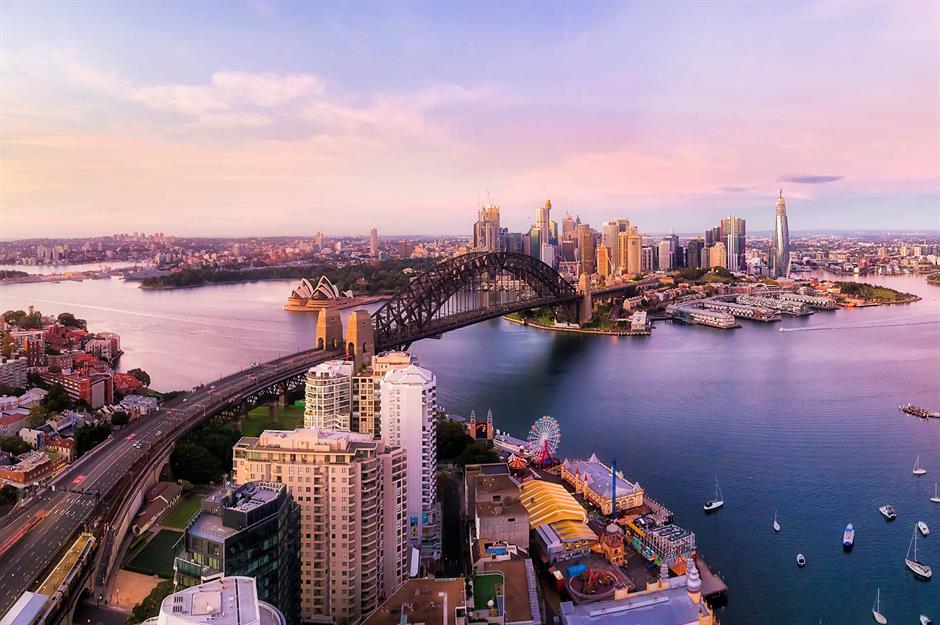
Realising the dream took us all - visionaries and pragmatists, politicians and architects, engineers, artists and, most fundamentally, the people of Australia. An exercise in nation building, as Joe Cahill underlined, it was an extraordinary collective act of dreaming in public a work of art built for the performance of works of art and brought to life by people who believed in the power of imagination. Nevertheless, Utzon’s masterpiece would define his career, and redefine the image of Australia both to itself and the world. Pressures piled upon its architect, Jørn Utzon, who left Australia midway through construction, never to return to see the building completed. The building’s design was inspired - entirely unlike anything that had been seen before. The breadth of those experiences reflects our visionary 1961 Act, which charges the Opera House not only with the promotion of artistic taste across all art forms, but also “scientific research into, and the encouragement of, new and improved forms of entertainment and methods of presentation.”īut while the tale of the Opera House is one of breathtaking triumph, it is also one of personal cost. Today it is Australia’s number one tourist destination, welcoming more than 8.2 million visitors a year and one of the world’s busiest performing arts centres, presenting more than 2000 shows 363 days a year for more than 1.5 million people, from the work of the eight flagship arts companies to which it is home to First Nations’ arts and culture, talks and ideas, theatre and dance and the superstars of classical and contemporary music. a building that changed the image of an entire country.”īuilt to “help mould a better and more enlightened community,” in the words of New South Wales Premier Joseph Cahill in 1954, the Sydney Opera House has been home to many of the world’s greatest artists and performances, and a meeting place for matters of local and international significance since opening in 1973. “It stands by itself as one of the indisputable masterpieces of human creativity, not only in the 20th century but in the history of humankind.” Expert evaluation report to the UNESCO World Heritage Committee, 2007.įusing ancient and modernist influences, and built on a site sacred to the local Gadigal people for thousands of years, the sculptural elegance of the Sydney Opera House has made it one of the most recognisable buildings of the twentieth century, synonymous with inspiration and imagination.Īs Pritzker Prize judge Frank Gehry said when awarding architecture’s highest award to the Opera House’s architect in 2003: “ Utzon made a building well ahead of its time, far ahead of available technology. It does not store any personal data.House History The story of Sydney Opera House The cookie is set by the GDPR Cookie Consent plugin and is used to store whether or not user has consented to the use of cookies. The cookie is used to store the user consent for the cookies in the category "Performance". This cookie is set by GDPR Cookie Consent plugin. The cookie is used to store the user consent for the cookies in the category "Other. But the foundations of this design are built of Utzon's studies of history and. This cookie is set by GDPR Cookie Consent plugin. In 1957, Jrn Utzon 's design for the Sydney Opera House was recognised for its individuality and its futuristic form.

The cookies is used to store the user consent for the cookies in the category "Necessary".

The cookie is set by GDPR cookie consent to record the user consent for the cookies in the category "Functional". The architect of Sydney Opera House, Jrn Utzon was a relatively unknown 38 year old Dane in January 1957 when his entry was announced winner of the. The cookie is used to store the user consent for the cookies in the category "Analytics". These cookies ensure basic functionalities and security features of the website, anonymously. Necessary cookies are absolutely essential for the website to function properly.


 0 kommentar(er)
0 kommentar(er)
